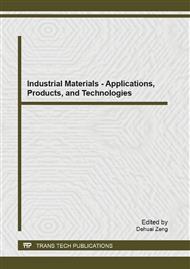p.314
p.318
p.327
p.332
p.336
p.342
p.349
p.355
p.361
Office Materials Impact to Perceived Working Environment Quality
Abstract:
Some common and new office material combination impact on perceived working environment quality used as surface interior materials is presented in this paper. Traditional and progressive materials comparison reveals new fact regarding the TVOCs concentration. Task of the study was to investigate the possibility of using individual material surfaces sorption ability. The chemical analysis and sensory assessments identifies health adverse of indoor air pollutants (TVOCs). The knowledge about the targeted use of sorption effect can be used already in the office working environment design phase. The results demonstrate the various sorption abilities of various indoor materials as well as various sorption ability of the same indoor surface material in various combinations.
Info:
Periodical:
Pages:
336-341
Citation:
Online since:
August 2013
Authors:
Price:
Сopyright:
© 2013 Trans Tech Publications Ltd. All Rights Reserved
Share:
Citation:


